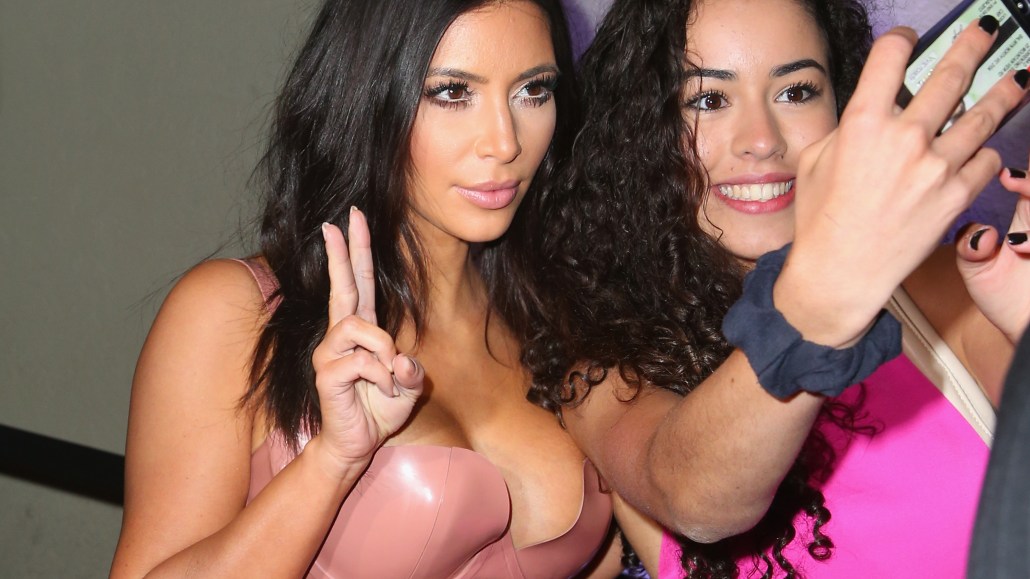Insights from CTV leaders at Dentsu, Horizon Media and more

Erin Dwyer is out to bring Kardashian Beauty to the Web, and she envisions Snapchat playing an integral part in that transition.
Kardashian sisters Kim, Kourtney and Khloé might be three of the most media-savvy stars on the planet, but their cosmetic brand lacks a significant digital presence. There’s no website for the brand’s U.S. customers, and its makeshift European website merely functions as a portal to other e-commerce websites selling Kardashian Beauty products. Some U.S. retailers such as Ulta sell Kardashian Beauty from their own e-commerce sites, however.
As head of global commerce and social at Haven Beauty, Kardashian Beauty’s parent company, Dwyer wants to change that. She’s hoping to soft-launch a Kardashian Beauty e-commerce destination in early summer, followed by an official roll-out sometime later in the year. And when it arrives, Snapchat will be an key marketing vehicle.
“Facebook and Twitter attempted innovation but have ended up closer to what we’re used to: ad network runs and sponsored posts,” Dwyer said. “With Snapchat, there’s an opportunity to have a more intimate relationship with the fans of our products and leverage it with a marketing perspective.”
Dwyer doesn’t anticipate having trouble generating traffic to the site once it’s up and coming. The Kardashian sisters are three of the most popular social media personalities on the Web, with each boasting at least 12 million Facebook likes, 14 million Instagram followers and 12 million Twitter followers. (Kim leads the trio on all three platforms, with at least 25 million followers on each.)
But despite their social media ubiquity and Kim’s incessant selfie preening, the Kardashian sisters are noticeably absent from Snapchat, the platform that has quickly evolved from misunderstood messaging tool into multimedia publisher-platform hybrid beloved by advertisers and media companies alike.
Dwyer wouldn’t comment on why the Kardashians are not on Snapchat. But a possible explanation may be that unlike Facebook, Instagram and Twitter, Snapchat does not offer a way for celebrities to obtain verified accounts.
Regardless, Dwyer foresees Snapchat being a large part of the Kardashian Beauty, both as a marketing tool and as an e-commerce platform unto itself.
She’s particularly interested in advertising on Cosmopolitan or People’s Snapchat channels because they’re cheaper than Snapchat’s sponsored story ads — reportedly $750,000 for a day’s worth of advertising — and offer a more direct relationship with consumers.
“Discover is intriguing because it is opt-in. A traditional marketer would say, ‘I want to be where the eyeballs are.’ The new behavior is control, though. If people go to the Cosmo channel, they’ll be more open to the ad because the content was good enough to draw them there,” Dwyer said.
That Snapchat users have not criticized the app for introducing ads, which happened to Instagram last year, is a testament to this, she added.
But Snapchat’s greatest potential may be as an e-commerce platform. Last November, Snapchat introduced Snapcash, a way for users to send money to one another through the app. And Dwyer is already thinking about using the feature to sell Kardashian products through Snapchat.
“Facebook and Twitter are attempting to facilitate buying with buy buttons, but I don’t know if it’s innate to their platforms,” she said. “I don’t know if you go to Facebook because you want to shop.”
While conducting transactions on messaging apps is common in Asia, U.S. consumers have been reluctant to embrace the practice, according to Jason Goldberg, head of commerce strategy at digital agency Razorfish.
But “if there is something that would be successful in a chat platform, it would be a Kardashian product,” he said.
Homepage image courtesy Getty Images
More in Media

Digiday+ Research: Publishers pull back their dependence on digital revenue
After a year in which publishers shifted their revenue dependence away from traditional channels and toward digital channels, 2025 has seen a shift back toward more of a balance between traditional and digital revenue sources.

LinkedIn makes it easier for creators to track performance across platforms
Creator data is becoming more accessible to third-party vendors via a new API — another step in LinkedIn’s creator platform evolution.

Ad Tech Briefing: The ‘plumbers’ posing as the unlikely saviors of the internet
After several false dawns, can Cloudflare’s ‘anti-AI scraping tool’ finally offer publishers a road to commercial redemption?





